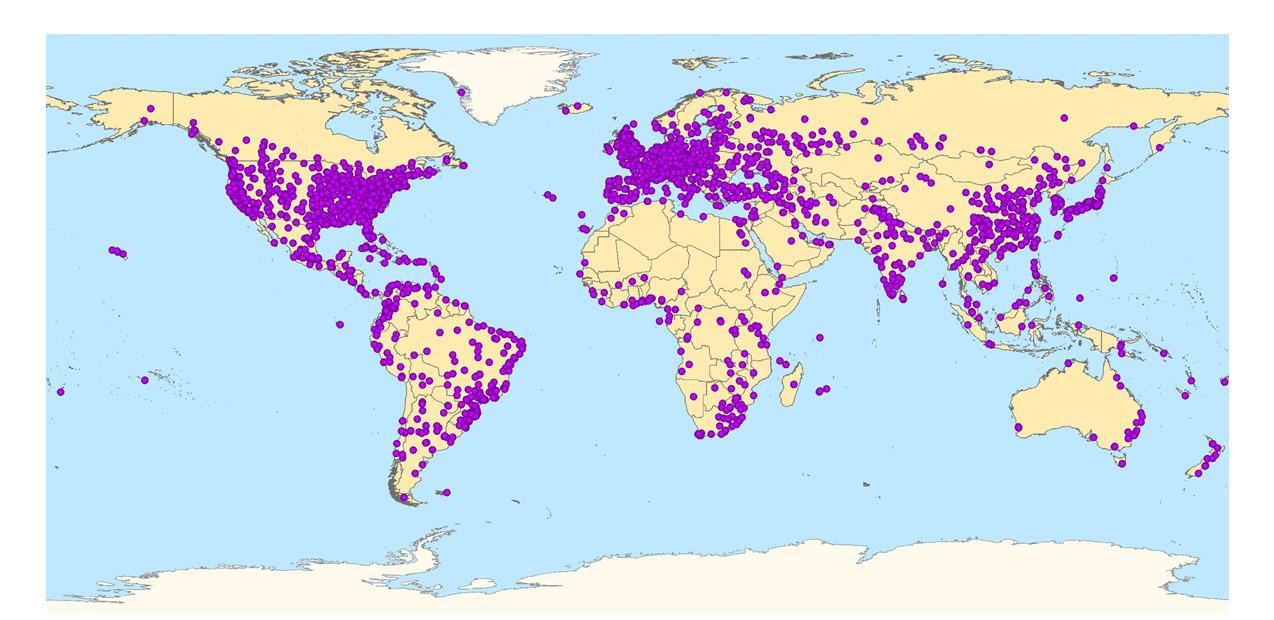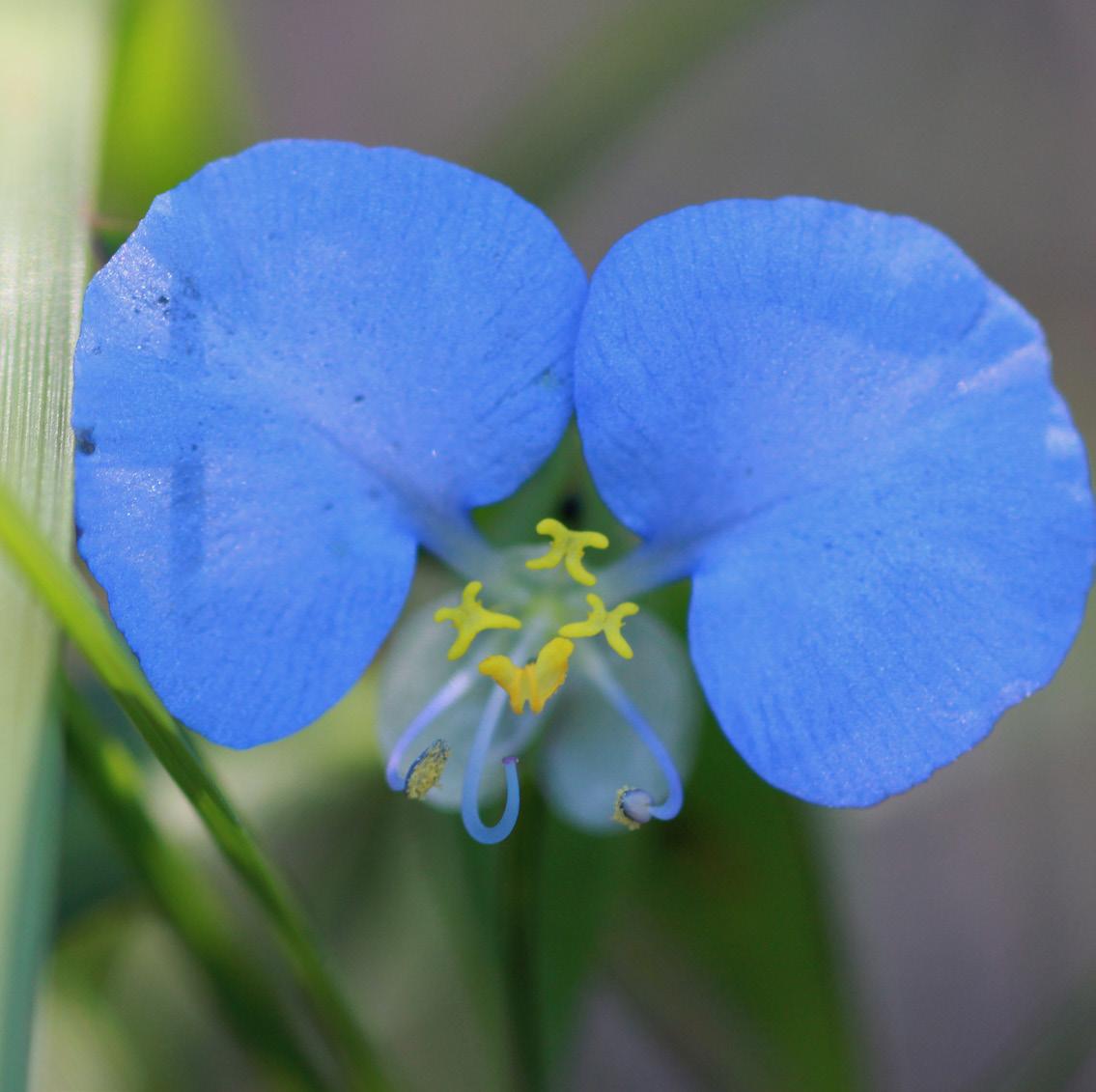
3 minute read
Index Herbariorum Gets an Upgrade
For the past 83 years, Index Herbariorum (IH) has been providing information about the world’s herbaria. The entry for each herbarium in the IH includes its physical location, web address, contents, and history, as well as the names, birth dates, contact information, and expertise of associated staff. Each institution in the index has a four to eight letter code that serves as its unique identifier, a practice that dates from the founding of the index. The International Association for Plant Taxonomy started IH and oversaw the publication of the first six editions. Responsibility for maintaining the index then shifted to The New York Botanical Garden. Dr. Patricia Holmgren, former Director of the NYBG Herbarium, served as co-editor of edition 6, and subsequently oversaw the compilation of volumes 7 and 8, the last published in hard copy. Dr. Noel Holmgren converted the index to an electronic database, which became available on-line in 1997. We replaced the original web portal in 2003 when we incorporated IH into the NYBG Virtual Herbarium. I took over the editorship of IH in September 2008.
A grant from the U.S. National Science Foundation (DBI grant # 1600051) has recently funded some much-needed upgrades to Index Herbariorum. With this funding, we were able to modify the structure of the database to include more information about the contents of herbaria (e.g., numbers of total specimens for the major groups of organisms stored in herbaria), the status of collections digitization, and the URLs of data portals through which the data can be accessed. We have created an API (https://github.com/nybgvh/IH-API/wiki) to facilitate the inclusion of Index Herbariorum data in other applications. We also modified the IH website so that herbaria can update their own information and new herbaria and staff members can self-register. All updates and new registrations are provisional until reviewed and accepted by the Editor. Since the self-update procedure went live in January 2018, there have been more than 500 updates to IH, including 48 new herbaria and 133 new staff members. Instructions about how to use the self-update portal, including an FAQ, are available on the IH opening web page (http:// sweetgum.nybg.org/science/ih/).
Advertisement
Prior to going live with the new portal, interns Schuyler Borden and Roslyn Rivas attempted to update as much of the existing IH data as possible by contacting correspondents and consulting institutional webpages, publications and, in some cases, neighboring herbaria. They focused their sleuthing on herbaria whose IH contact information was no longer functional and for those herbaria that had not provided any updates to their entries in more than a decade. Through their efforts, we were able to cut the number of outdated or unreachable herbaria in half. The list of herbaria with outdated information is still quite long, though—if interested, you can download the list from the Index Herbariorum website opening page. If you can provide information about any herbaria in the list, we will be very grateful!
The data updates have made it possible to offer a (reasonably) accurate annual summary of the contents of the world’s herbaria. Reports entitled, “The World’s Herbaria” for 2016 and 2017 are available for download on the IH website. These reports provide an annual snapshot of IH data to facilitate tracking changes in the number of herbaria and the specimens they hold over time. Participating institutions can use these data to put their own collection in a global perspective and to understand how they contribute to the worldwide effort to document plant and fungal biodiversity. Hopefully the report will also prompt herbaria to update their information regularly. We will post new reports in early January of each year. The 2018 version reports 3001 active herbaria in 176 countries that collectively contain 387,007,790 specimens (Fig. 1). Linked to these herbaria are 12,174 staff members and associates. During 2017, 73 new herbaria were added to Index Herbariorum, and 35 herbaria were reported as discontinued.

Fig. 1. Location of the world’s herbaria
New York Botanical Garden staff member Melissa Tulig (Director of Biodiversity Informatics) oversaw the changes to the IH database and Joel Ramirez (Web Developer for Biodiversity Informatics) created the self-updating website. They, along with Schuyler and Roslyn, have made this project a pleasure to direct. Herbaria have long had a tradition of communication and cooperation, and Index Herbariorum benefits greatly from this tradition. I thank the hundreds of contributors each year who alert me to changes in their own herbaria and to changes in other herbaria.
-Barbara M. Thiers, Director of the William and Lynda Steere Herbarium, and Editor of Index Herbariorum (The New York Botanical Garden, Bronx, New York)











